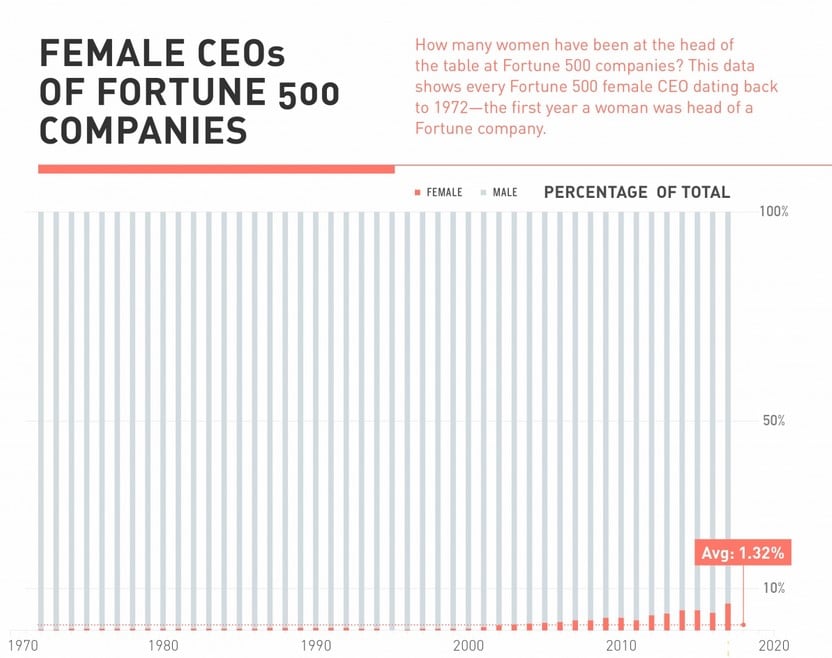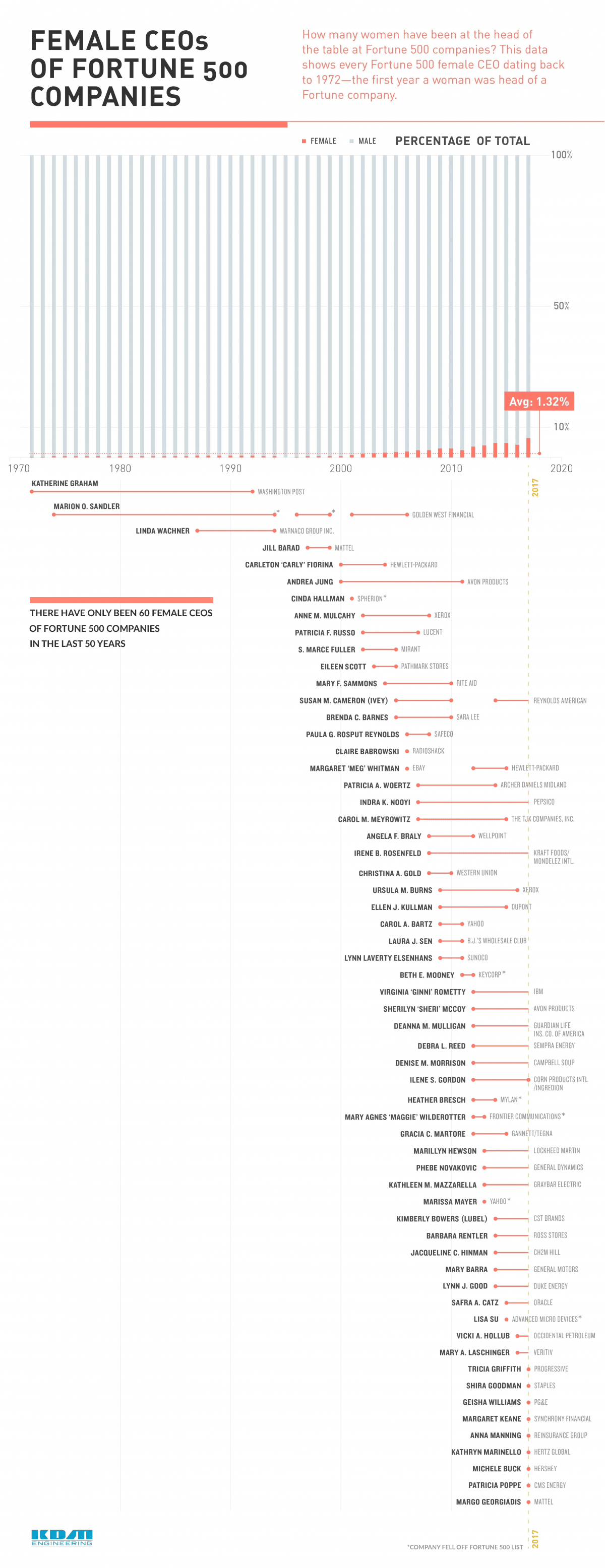Only 60 women throughout history have shattered the ultimate glass ceiling and ran the board room at a Fortune 500 Company.
That’s less than an average of 2% and today, only 6.4% of such corporations are run by female CEOs.
Starting in 1972, we examined every female-run Fortune 500 company to see how much progress in female leadership is being made across Fortune 500 companies. While there has been impressive strides made in the last decade (32 female CEO’s named since 2010) the disparity between male and female CEO’s is still too large.
When it comes to women in leadership roles in business and commerce, the math doesn’t add up. However, the tide is changing and more females are poised to break the glass ceiling, paving the way for more equal opportunities. Check out the graph below to see every Fortune 500 female CEO dating back to 1972—the first year a women was head of a Fortune 500 company.
In the 46 years since Katherine Graham began her tenure as Publisher and CEO of The Washington Post, there have been only 60 female CEOs of Fortune 500 companies. And for 28 years, there were only four: aforementioned Graham, Marion O. Sandler of Golden West Financial, Linda Wachner of Warnaco Group Inc., and Jill Barad of Mattel.
Obviously it’s not because women didn’t possess the skill, talent, intelligence, or business acumen to run major corporations; it’s because there wasn’t enough opportunity. According to Pew Research, in 1972, only 20% of students enrolled in college were women, compared to 40% of 18-24 year old women in 2008. Half the population long remained unrepresented in the boardroom, and starting with Graham, women were finally getting a seat at the conference table.
While the road is long and delayed, some women have made such indelible marks as female CEOs that they repeat themselves, sometimes three times! Marion O. Sanders has thrice been named co-CEO of Golden West Financial, taking only a few short breaks, until 2004, when Golden West Financial (and World Savings Bank) were sold to Wachovia Bank.
Though the graph shows Susan M. Cameron as Reynolds American CEO in 2004, in 2001, she actually was named head of Brown & Williamson, a major cigarette company that later merged with Reynolds. After a brief turn in retirement, Cameron returned as CEO in 2014, before turning the reigns over for good to another female CEO, Debra Crew, in 2017.
Meg Whitman is one of the few (maybe only) women who have been CEO at more than one Fortune 500 company. In 1998, she joined eBay and turned the 30-employee, $4 million company into 15,000 employees and $8 billion in revenue, ending her tenure in 2008. In 2011, she was tapped to lead Hewlett-Packard and stepped aside in February of 2018.
While the number of women grabbing the brass ring is steadily climbing, there have been two big bursts in the last decade for female CEOs. 2012 and 2017 were boom years for women-led companies, boasting nine in each year. Another marker of the tide finally turning: Since 2010, there have been 32 female CEOs across every industry.
While the current percentage of female CEOs in Fortune 500 companies is a paltry 6.4%, the upward trajectory of women having a place in the boardroom is skyrocketing. As more women inch closer to the glass ceiling, hammer in hand, it’s because they stand on the shoulders of their predecessors. As this graph shows, the future of business is female.
Article by KDM Engineering














